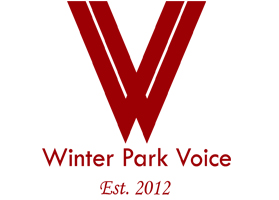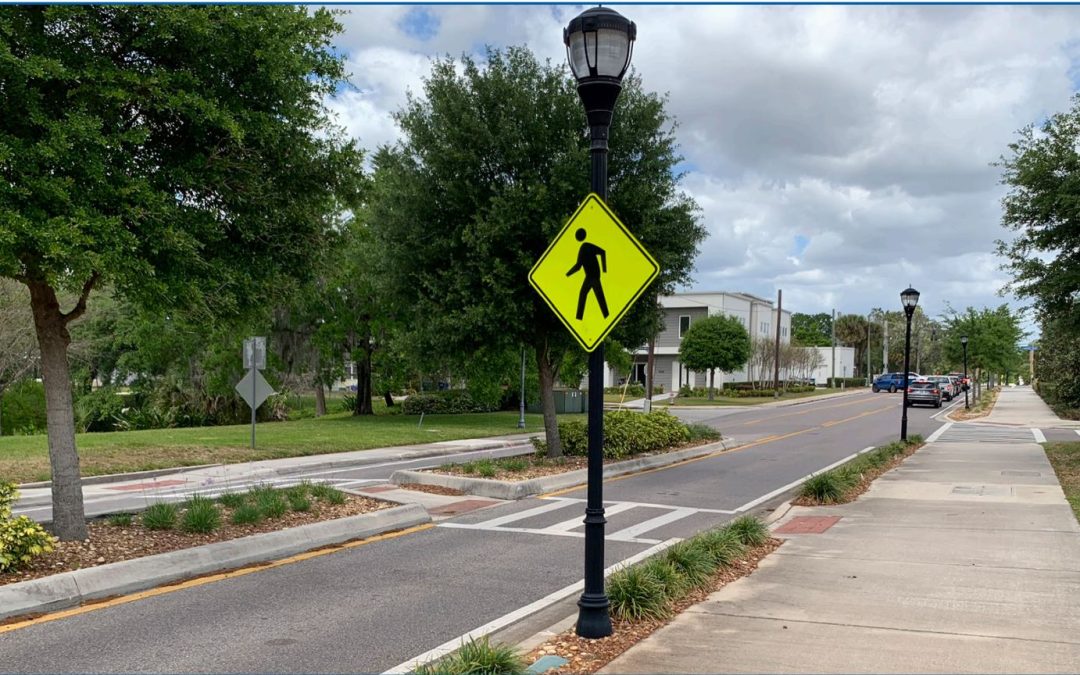Transportation draft plan focuses on pedestrians, cyclists
Projects include enhancing trail system, planning for an elderly population
By Beth Kassab
Winter Park City commissioners want to create an “emerald necklace” of greenspaces, bike paths and trails that connect the city’s major parks and link regional trails such as Cady Way as well as improve pedestrian and bicyclist safety near schools and for an aging population.
The priorities emerged at a recent work session as the commission discussed the draft of a Transportation Master Plan that includes $141 million in projects over 20 years to improve traffic, parking, bike paths and sidewalks. Top goals outlined in the draft include preparing for the needs of a growing aging population, autonomous vehicles and promoting mass transit such as SunRail.
How the city will pay for the projects, estimated at a cost of about $7 million each year is still unclear after voters turned down a county-wide sales tax increase for transportation needs. Potential sources of revenue include a proposed extension of the Community Redevelopment Agency, state or federal grants or multi-modal transportation impact fees, city staff said.
The plan, a tool expected to help city staff have a better chance at securing grant funds, is expected to come before the City Commission for formal approval in the next month or two.
A few interesting nuggets from the plan include:
- An official bike map. The city plans to create a map for cyclists that can help users better understand how trails are connected and the safest ways to cross major corridors.
- A ticketless valet system. This idea calls for valet stations in busy areas like Park Avenue where shoppers and diners can drop off their cars. Instead of a paper ticket, however, they will receive a link and can use the link to retrieve their car from any point inside a designated area. That means a shopper who starts on the the north end of Park Avenue could make their way on foot to the south end and have their car brought to them there rather than returning to the valet station. This is one of the concepts being tossed around as a way to use technology to improve parking and reduce traffic in busy areas.
- A real-time parking app. In another attempt to make parking more manageable without spending an estimated $18.5 million on a new downtown parking garage, a parking app would track and predict where spots are available using cellular data. Drivers could look up availability near their destinations via an app created specifically for the city.
- Brick streets with more pavement and fewer bricks. The concept, which includes a photo of a street from Lakeland, calls for an extended concrete curb gutter pan — or flat surface next to the curb — that is wide enough for a bicycle or stroller path. Such a design allows more room for pedestrians without removing mature landscaping that often gets in the way of sidewalks along brick streets and without the maintenance associated with bricks.
Questions or comments? Email the editor at WinterParkVoiceEditor@gmail.com
.


Some interesting ideas and improvements noted. After spending a week in Park City, UT and experiencing the wonderful SAFE walking and bike trails, the Emerald Necklace is a win-win for Winter Park. If only they could control the heat and humidity!!
Another thought for a park is something fashioned more for seniors. Maryland is designing one called SeniorScapes that offers older citizens (including dementia population) opportunities to get outside for movement and sensory input.
Re the real-time parking app, it would never work. A parking place that opens up in downtown WP is taken by another car in seconds. Anyone looking for a parking spot online, then driving there, would find the spot already taken.
The brick street modification on page 66 of the transportation master plan book looks hideous. Keep that detail in Lakeland. Fix the brick streets, sidewalks and curbs where needed. Plant more live oaks.
Europes cobble streets and old Roman roads would be easier to walk with a nice layer of asphalt. Glad they didn’t do it.
I see your point but take a drive down the newly resurfaced WP Road. Europe/Romans would’ve used asphalt if it was practical. Cities restricted the Roman carriages b/c their iron wheels made so much noise on cobblestones. (these folks were ancestors of many in WP!)
I always have a fear about these ticketless valet systems with some dude pretending to be a valet taking my car for ride and not returning it! The sensor based parking app works well when there is lots of parking, not when 20 cars are circling park ave looking for that one space that just opened up. And won’t it encourage people to be staring at their phones instead of the road? Valets work great on park ave for those who use them but create a mess for cheap folk like me who just want to park as they take up additional spaces. Maybe focus on less cars on and around park ave and public transportation systems, like horse and buggies or peacock themed golf carts from the WP village parking lots to Park Ave or maybe just make the old library a public parking lot with free transport to the ave for those who don’t want to walk. Alright, got to get my morning coffee so I can think up some more ideas for you all. Hey, city officials, the Muffinman is for hire for consulting!
Nothing for seniors here unless they walk long distances or bike, most of the ones I know do not. Increasingly as the already large senior population gets even more senior they do not drive. How do they get to sunrail? How do they visit more than a few blocks on park avenue in the heat? How do they even get to park avenue or winter park village, Uber seems to be the only answer.
It’s very hard to get around in WP already. These changes would make traffic even worse!!
The one thing you do not see in Winter Park is people using bikes or their own feet to get anywhere. It is too hot and too humid for 10 months of the year Look at all the funds spent on Denning. Do you see anyone on it? No. As much as we might aspire to turn WP into a biking and pedestrian mecca, our harsh climate is prohibitive. Our hierarchy of transportation modalities is back asswards. The monetary focus should be on maintaining streets and sidewalks in excellent condition. Then, augment this maintenance with a push to create and maintain great PARKS and more green space. Access to the parks will be by car or by residents who reside within walking a baby stroller distance. Get real. And please do not build in Central Park -even in the West Meadow. It should be green space not a future homeless encampment.
Rigorous enforcement of traffic laws would be by far the most economical and realistic – and immediate – means of keeping our pedestrians and cyclists safe. Is that off the table? Winter Park is a cut-through. Every long-term resident of the city that I know has witnessed a steep decline in enforcement and a concomitant uptick in aggressive driving, yet when it’s mentioned to the powers that be it draws a blank stare. Moreover, you can’t in good conscience revitalize a place like WP Village with places designed to attract a party crowd and then ignore the traffic issues it creates! Well, I guess you can – and then you can talk about implementing expensive plans to make the city safe for pedestrians and bicyclists. I suggest we get some rigorous traffic enforcement on the streets, let the word get out that WP doesn’t play, and see what expensive changes are needed after that.
Anyone who drove out of Gainesville through Waldo in the 90’s en route to beaches can tell you enforcement DOES work. Now, we don’t need to go Waldo on people but greater enforcement would definitely help slow people down.
Anyone over 12 years old riding a bicycle in Winter Park is a daredevil. They think their helmet makes them invincible. It does not. Lots of lunatics drive through Winter Park every day and don’t look for bicyclists. Anyone over 60 riding a bike in Winter Park should be checked for dementia.
The Winter Parkers I know (including myself) pay other people to do literally everything for them. Full time child care for non-working women, the tiniest of “honey do list” home maintenance jobs and the handy man is called in, auto maintenance, lawn maintenance, housecleaning, pest control, painting, pressure washing, car detailing, dog walking, Uber eating, grocery delivering, dry clean delivering, Xmas light installation etc. Most even pay people to come in to do their laundry and Uber to drive us to the Avenue for dinner and the under 16 teens to activities.
But ok sure….. we are going to suddenly walk and bike everywhere, to be green, emerald even. Get real. Not unless the expensive personal trainer makes it part of the day’s workout!
I think you have identified one cluster of winter park residents. But there are multiple clusters and some of those would like to bike and walk as much as they can safely do. I walk around winter park and love the fresh air and exercise. Besides a few people stopping to get a selfie with me, it is pure bliss. Of course that is when the builders and leaf blowers aren’t making noise.
That is very good…and funny. Luckily, I have a wife that is assigned most of these duties.
I think you may be exaggerating just a bit. As for your list, I for one don’t pay anyone to walk my dog. I don’t even own a dog.
Count the bikes you see parked in front of Publix on your next visit. No matter how much we beg, yearn or spend on bike paths…our weather is not welcoming. It’s cars we use. And for good reason. Aside from the large group of regular weekend warriors on early Saturday mornings, biking anywhere just isn’t practical here and pretending does not work. Would you ride your bike around Winter Park? On a dare? If someone paid you?
There are always a few bikes at Publix in the Village. There is not a safe way to get there. Also, when you ride your bike to buy a quart of ice cream, it melts by the time you get home. Most people don’t do their grocery shopping by bicycle. But many would bike to the Village if they felt safe. Just think of biking as yoga without the pants.
There should always be a bike or two…no matter which Publix you count. Remember that not everyone has a driver’s license. Young people don’t want to drive anymore and other people have forfeited the privilege of driving. Still others are just less than sane…so they opt to risk life and limb. Using WP Village as your example, just analyze the ratio of bikes to cars. It’s the biggest Publix, the most people, and still nearly zero bikes.
Strap your air conditioner from home on your back before you hop on your bike, plug it in with a really long extension cord, and you’re good to go!
Always carry at least 16 gallons of water in your saddle pack to stay hydrated on your ride!
Wear your helmet and tape pillows to the rest of your body just in case a squirrel runs out in front of your bike!